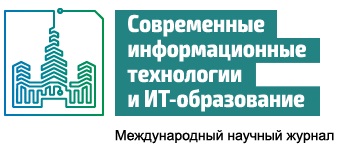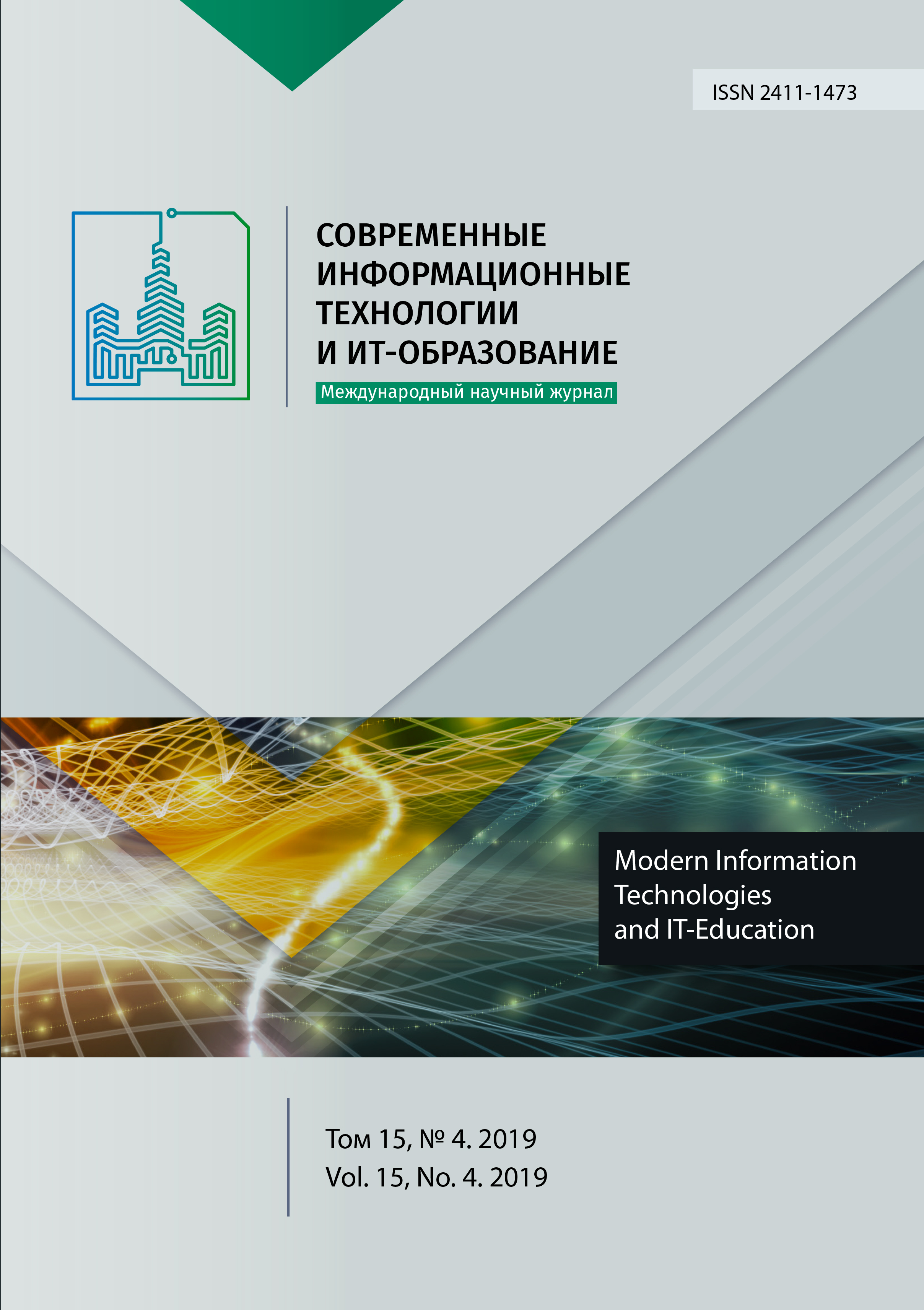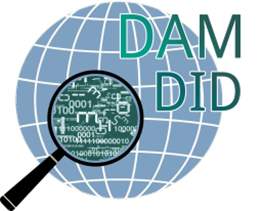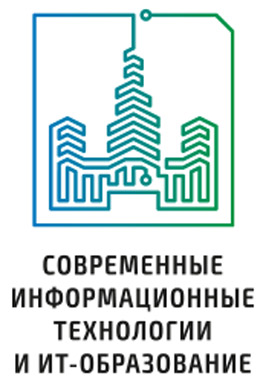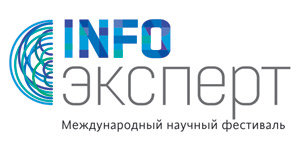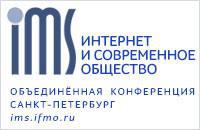On the Digital Ecosystem of the Modern University
Abstract
The process of digital transformation is progressively englobing education, learning and management processes within the system of higher education. This trend at the level of universities has resulted in emergence, evolution and development of the concept of the “digital university” and of more advanced construct of university digital ecosystem. The article considers different aspects of the concept of university digital ecosystem, studying the results of implementation of digital learning and management technology into the practices of world and Russian universities, obstacles and outlook for their further extension, and risks accompanying digital transformation of universities. The article concludes that the process of forming and developing university digital ecosystems should consider complexity of factors accounting for diversified conditions, objectives, tasks and results of building a digital ecosystem. The main conclusion is that concept of digital transformation should be integrated into university development strategy.
References
[2] Maltese V., Giunchiglia F. Foundations of Digital Universities. Cataloging & Classification Quarterly. 2017; 55(1):26-50. (In Eng.) DOI: 10.1080/01639374.2016.1245231
[3] The 2018 digital university. Staying relevant in the digital age. Talking points. PWC, 2018. Available at: https://www.pwc.co.uk/assets/pdf/the-2018-digital-university-staying-relevant-in-the-digital-age.pdf (accessed 25.10.2019). (In Eng.)
[4] Khalid J., Ram B., Soliman M., Ali A., Khaleel M., Md Shamimul Islam. Promising digital university: a pivotal need for higher education transformation. International Journal of Management in Education. 2018; 12(3):264-275. (In Eng.) DOI: 10.1504/IJMIE.2018.092868
[5] Grigoriev S.G., Mishota I. Y. Digital University: an actual paradigm of the education informatization. In: Proceedings of the 1st International Scientific Conference "Modern Management Trends and the Digital Economy: from Regional Development to Global Economic Growth" (MTDE 2019). Atlantis Press, 2019. (In Eng.) DOI: 10.2991/mtde-19.2019.128
[6] Nadin M. Anticipating the Digital University. In: 2009 Third International Conference on Digital Society. Cancun, 2009, pp. 190-195. (In Eng.) DOI: 10.1109/ICDS.2009.49
[7] Siemens G., Gašević D., Dawson S. Preparing for the Digital University: A Review of the History and Current State of Distance, Blended and Online Learning. Athabasca AB Canada: Athabasca University, 2015. (In Eng.) DOI: 10.13140/RG.2.1.3515.8483.
[8] Akatkin Yu.M., Karpov O.E., Konyavskiy V.A., Yasinovskaya E.D. Digital economy: Conceptual architecture of a digital economic sector ecosystem. Business Informatics. 2017; (4):17-28. (In Eng.) DOI: 10.17323/1998-0663.2017.4.17.28
[9] Pranata I., Skinner G., Athauda R. A Distributed Secure Mechanism for Resource Protection in a Digital Ecosystem Environment. Journal of Information Security. 2012; 3(1):25-38. (In Eng.) DOI: 10.4236/jis.2012.31004
[10] Newman D. How To Capitalize On Your Digital Ecosystem. Forbes Magazine. Jul 5, 2017. Available at: https://www.forbes.com/sites/danielnewman/2017/07/05/how-to-capitalize-on-your-digital-ecosystem/ (accessed 25.10.2019). (In Eng.)
[11] European Commission. Digital Ecosystems: The New Global Commons for SMEs and Local Growth. Academic Press, 2006. (In Eng.)
[12] Mahon K., Heikkinen H.L.T., Huttunen R. Critical educational praxis in university ecosystems: enablers and constraints. Pedagogy, Culture & Society .2019; 27(3):463-480. (In Eng.) DOI: 10.1080/14681366.2018.1522663
[13] Juhl J., Buch A. Transforming academia: The role of education. Educational Philosophy and Theory. 2019; 51(8):803-814. (In Eng.) DOI: 10.1080/00131857.2018.1508996
[14] Pillai G., Chibale K., Constable E.C. et al. The Next Generation Scientist program: capacity-building for future scientific leaders in low- and middle-income countries. BMC Medical Education. 2018; 18:233. (In Eng.) DOI: https://doi.org/10.1186/s12909-018-1331-y
[15] Giovnnella C., Andone D., Dascalu M., Popescu E., Rehm M., Roccasalva G. Smartness of Learning Ecosystems and its Bottom-up Emergence in six European Campuses. Interaction Design and Architecture(s). 2015; (27):79-92. Available at: http://www.mifav.uniroma2.it/inevent/events/idea2010/doc/27_5.pdf (accessed 25.10.2019). (In Eng.)
[16] Van de Heyde V., Siebrits A. The ecosystem of e-learning model for higher education. South African Journal of Science. 2019; 115(5/6):5808. (In Eng.) DOI: 10.17159/ sajs.2019/5808
[17] Álvarez-Arregui E., Rodríguez-Martín A., Madrigal-Maldonado R., Grossi-Sampedro B., Arreguit, X. Ecosystems of Media Training and Competence: International Assessment of Its Implementation in Higher Education. Comunicar. 2017; (51):105-114. (In Eng.) DOI: https://doi.org/10.3916/C51-2017-10
[18] Froumin I., Kouzminov Y., Semyonov D. Institutional diversity in Russian higher education: revolutions and evolution. European Journal of Higher Education. 2014; 4(3):209-234. (In Eng.) DOI: 10.1080/21568235.2014.916532
[19] Randeree K. Active Learning Strategies in Engineering Education in Gulf Countries. The International Journal of Learning. 2006; 12(11):1-8. (In Eng.)
[20] Henderson M., Selwyn N., Finger G., Aston R. Students’ everyday engagement with digital technology in university: exploring patterns of use and ‘usefulness’. Journal of Higher Education Policy and Management. 2015; 37(3):308-319. (In Eng.) DOI: 10.1080/1360080X.2015.1034424
[21] Newman D. Top 6 Digital Transformation Trends In Education. Forbes Magazine. Jul 18, 2017. Available at: https://www.forbes.com/sites/danielnewman/2017/07/18/top-6-digital-transformation-trends-in-education/#51041b3d2a9a (accessed 25.10.2019). (In Eng.)
[22] Lippincott J.K. Libraries and the Digital University. College and Research Libraries. 2015; 76(3):283-295. (In Eng.) DOI: 10.5860/crl.76.3.283
[23] Picciano A.G. Online Education: Foundations, Planning, and Pedagogy. Routledge, 1st Edition. 2018. (In Eng.)
[24] Laaser W. Economic Implications and Stakeholder Reactions in a Digital University Environment. RED. Revista de Educación a Distancia. 2018; 57(4). (In Eng.) DOI: 10.6018/red/57/4
[25] Sappey J., Relf S. Digital Technology Education and its Impact on Traditional Academic Roles and Practice. Journal of University Teaching & Learning Practice. 2010; 7(1):3. Available at: http://ro.uow.edu.au/jutlp/vol7/iss1/3 (accessed 25.10.2019). (In Eng.)
[26] Alenezi F.Y. The Role of Cloud Computing for the Enhancement of Teaching and Learning in Saudi Arabian Universities in Accordance with the Social Constructivism Theory: A Specialist’s Point of View. International Journal of Emerging Technologies in Learning. 2019; 14(13):70-87. (In Eng.) DOI: 10.3991/ijet.v14i13.9557
[27] Loh B., Tang A-C., Menkhoff T., Evers H-D. Applying Knowledge Management in University Research. Governing and Managing Knowledge in Asia. 2010; 3:199-227. Research Collection Lee Kong Chian School Of Business. Available at: https://ink.library.smu.edu.sg/lkcsb_research/1918 (accessed 25.10.2019). (In Eng.)
[28] Tarus J.K., Gichoya D. E-Learning in Kenyan Universities: Preconditions for Successful Implementation. The Electronic Journal of Information Systems in Developing Countries. 2015; 66(1):1-14. (In Eng.) DOI: 10.1002/j.1681-4835.2015.tb00474.x
[29] Soegoto E.S., Luckyardi S. Digitalized University – Value Creation in the Age 4.0. Journal of Physics: Conference Series. 2019, vol. 1179, The 1st International Conference on Computer, Science, Engineering and Technology 27–28 November 2018, Tasikmalaya, Indonesia, 2019, pp. 012035. (In Eng.) DOI: 10.1088/1742-6596/1179/1/012035
[30] Khmeleva G.A., Agaeva L.K., Chirkunova E.K., Shikhatova E.E. Russian Universities: The Innovation Centres Of Digitalization In The Region. The European Proceedings of Social & Behavioural Sciences. 2019, pp. 1728-1740. (In Eng.) DOI: 10.15405/epsbs.2019.03.175
[31] Richards C.K. Distance Education, On-Campus Learning, and E-Learning Convergence: An Australian Exploration. International Journal on E-Learning. 2002; 1(3):30-39. Available at: https://www.learntechlib.org/primary/p/8931 (accessed 25.10.2019). (In Eng.)
[32] Steele C. Scholarly Communication, Scholarly Publishing and University Libraries. Plus Ça Change? Australian Academic & Research Libraries. 2014; 45(4):241-261. (In Eng.) DOI: 10.1080/00048623.2014.950042
[33] Fransman J. Assembling Texts in the Digital University. International Journal of Learning and Media. 2012; 4(3-4):53-58. (In Eng.) DOI: 10.1162/IJLM_a_00102
[34] Divya P., Haneefa M.K. Print Vs Digital: University Students’ Preferences of Reading. In: Proceedings of the International Conference on Rejuvenating Libraries for Information Access in the Digital Era. Dept. of Library and Information Science, Annamalai University, 9-10 March 2018, pp. 726-738. (In Eng.)
[35] Lea M., Goodfellow R. Academic literacies in the digital university. In: Literacy in the Digital University: The Relation of New Media Practices to Traditional Literacy Practices in the Academy and the Professions, 16 Oct 2009, Edinburgh University. Available at: http://oro.open.ac.uk/25393/2/ (accessed 25.10.2019). (In Eng.)

This work is licensed under a Creative Commons Attribution 4.0 International License.
Publication policy of the journal is based on traditional ethical principles of the Russian scientific periodicals and is built in terms of ethical norms of editors and publishers work stated in Code of Conduct and Best Practice Guidelines for Journal Editors and Code of Conduct for Journal Publishers, developed by the Committee on Publication Ethics (COPE). In the course of publishing editorial board of the journal is led by international rules for copyright protection, statutory regulations of the Russian Federation as well as international standards of publishing.
Authors publishing articles in this journal agree to the following: They retain copyright and grant the journal right of first publication of the work, which is automatically licensed under the Creative Commons Attribution License (CC BY license). Users can use, reuse and build upon the material published in this journal provided that such uses are fully attributed.
